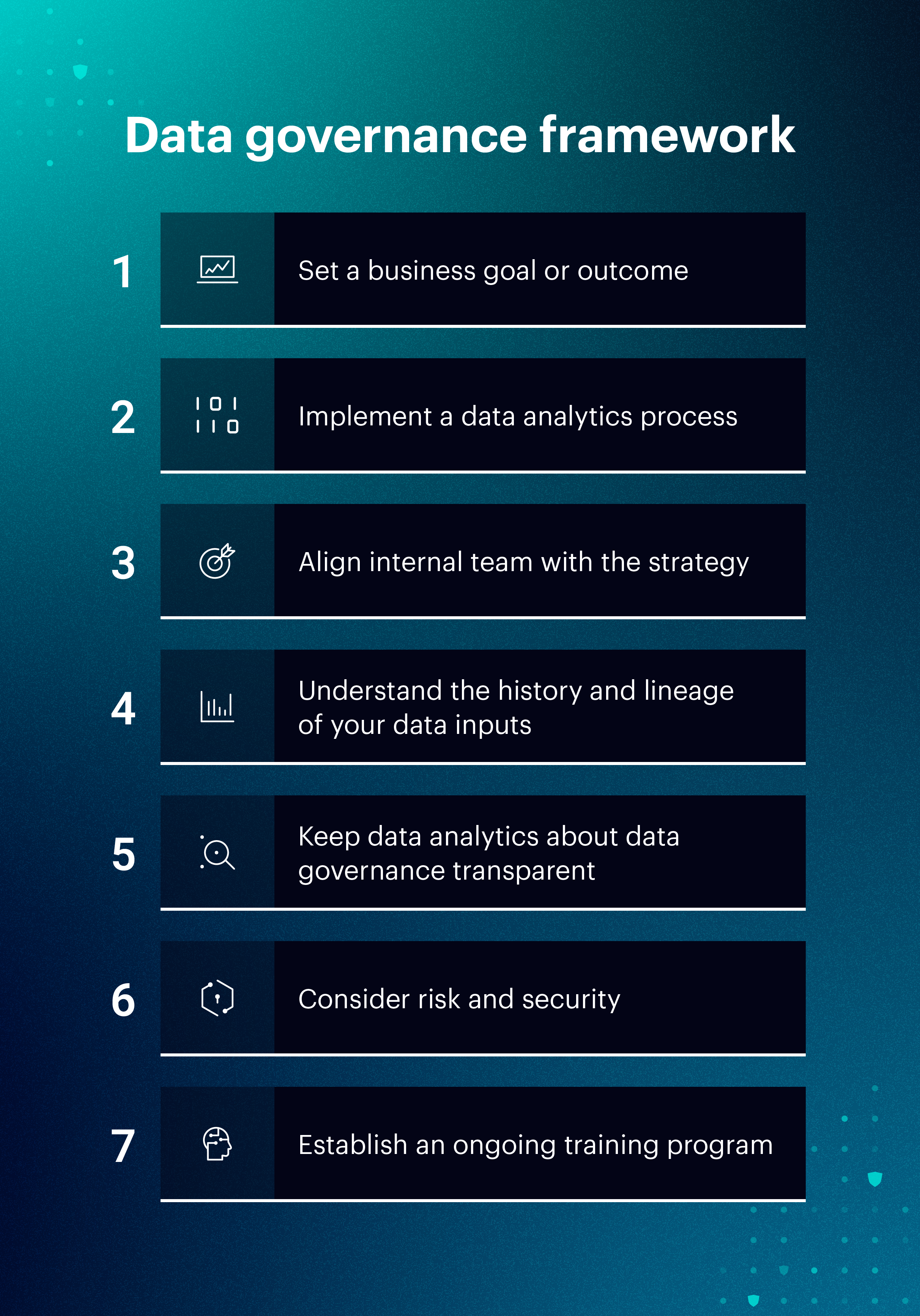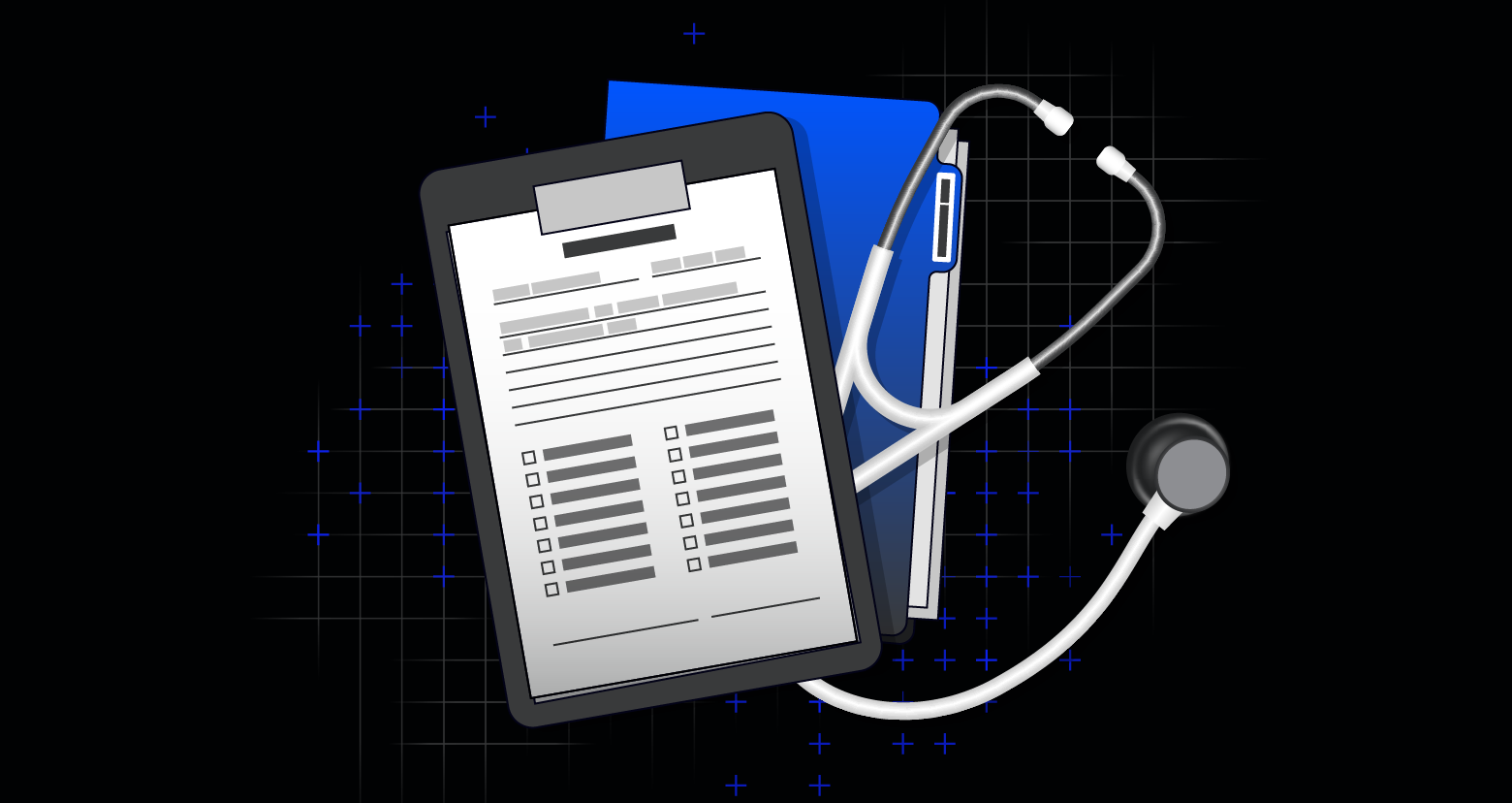Data governance is a must in today's dynamic and ever-changing enterprise environment. Businesses today capture massive amounts of data from a variety of sources, and data governance helps organizations manage risk, maximize value, and reduce costs.
In short, data governance is the practice of knowing where your data is, how it's being utilized, and whether or not it’s adequately protected. Good data governance ensures that data has integrity, is consistent, and is not being misused or mishandled.
Here we’ll cover what data governance is, core principles of data governance, and how to improve the practice within your own organization.
Get the Free Essential Guide to US Data Protection Compliance and Regulations
- What is data governance?
- Data governance framework and principles
- How do data governance frameworks operate?
- Where a company’s data governance commonly fails
- How to implement data governance using best practices
- Data governances FAQ
Quick review: What is data governance?
Data Governance is the set of processes, and procedures organizations use to manage, utilize, and protect their data. In this context, data can refer to a subset of a company’s digital or hard copy assets. Defining what data means to an organization is one of the core data governance best practices. Once you define what data means, you can formulate ways to use your data in ways that advance your business.
- Think of data governance as the who, what, when, where, and why of your organization’s data.
Another key aspect of data governance is protecting both company and customer private data. Data breaches are near-daily occurrences and governments are constantly enacting laws and regulatory frameworks like HIPAA, GDPR, and CCPA. A big part of data governance is protecting the private data of customers and citizens. A good data governance program builds controls to protect data and help organizations adhere to compliance regulations.
Benefits of data governance
Without effective data governance, inconsistencies in various systems across an organization may remain resolved. For example, customer accounts may appear in different formats across sales, logistics, and customer service systems. This might complicate data integration efforts or create data integrity issues that adversely affect the accuracy of business intelligence (BI), enterprise reporting, or analytics applications. In addition, data errors might not be identified and fixed, further affecting BI and analytics accuracy.
Employing data governance best practices helps organizations make the most of their data and avoid operational or analytic issues that result from inconsistencies. Here are a few concrete advantages:
- Centralized policies and systems reduce IT costs related to data governance
- Data standards allow for better cross-functional decision making and communication
- Compliance audits are easier to manage, and compliance standards are easier to maintain
- Business intelligence for short and long-term planning, including mergers and acquisitions, gets fuel from data
- Data growth is controlled and organized
- Stable data makes adapting to new data and privacy legislation easier
However, there are a number of cons and challenges to consider when implementing a data governance program or strategy. Here are a few things to consider:
- Mandates: Data governance requires a company-wide mandate to implement correctly, making it a large project to start and manage.
- Resources: Good data governance requires focus, time, and resources from various teams that may distract from other efforts.
- Coordination: Data governance is a part of a larger IT governance policy and the two need to be coordinated.
- Buy-in: Getting employees to care about data governance can be difficult. Users need incentives and motivation to follow initiatives.
- Flexibility: Data governance efforts need to be flexible to team needs and simple for users. If data governance impedes work efforts, it will not promote business goals.
- Implementation:Selecting technology and tools to manage a data governance strategy can be complicated. Use resources like Gartner to find the right tools that fit your strategy.
Overcoming these challenges is entirely possible and should deter no one from implementing data governance. One of the most important aspects of doing so is knowing who is responsible for what when it comes to data governance.
Who is responsible for data governance?
A comprehensive data governance program requires a few specific roles, groups, and functions. Here’s who is responsible for what, and the capabilities they should have:
Chief Data Officer
The Chief Data Officer (CDO) is a rapidly emerging role. Companies are beginning to understand the importance of managing data and implementing a data governance framework, and that means hiring a CDO. The CDO is the company leader of the data governance strategy, and hiring a CDO shows the commitment to data and buy-in from the top to take a data governance program seriously.
Data owners
Data owners are the people that have direct responsibility for data. They are involved in the protection and quality of data as a business asset. A data owner will be on the team that uses the data. For example, a member of the finance team should be a Data owner for the finance team’s data.
Varonis automates the process for data owners to manage access to their data. Data owners know who in their organization should have access to their data, and providing them the tools they need to manage and audit access to data is good data governance.
Data stewards
Data stewards are the champions of your data governance strategy. They meet with Data owners and enforce data governance policies and procedures, as well as train new data owners and employees in data governance.
Data governance committees
The Data Governance Committee sets policies and procedures for data governance. This committee works with the CDO to establish the who, what, when, where, and why of data governance.
Data governance framework and principles
The most common objective of data governance is the standardization of data definitions across an enterprise or organization. Other goals and objectives depend on the focus of a particular data governance program. Within the commonly accepted data governance framework, you should establish principles that make sense for your environment.
Here are data governance principles that you should follow no matter what shape your implementation eventually takes:
- Integrity: All actors within the program should act honestly and be forthcoming about things like constraints, challenges, and other impacts of data governance decisions.
- Transparency: Processes should be clear and transparent to both participants and auditors in how practices and controls will be introduced and implemented.
- Auditability: Data Governance activities should be auditable and accompanied by documentation to support compliance-based and operational auditing requirements.
- Accountability: You need to define accountabilities for cross-functional and data-related decisions, processes, and controls. Know where the buck stops.
- Stewardship: Know, assign, and delegate governance stewardship activities that are the responsibilities of both individual contributors and data stewardship groups.
- Checks & balances: Introduce checks and balances between business and technology teams, creators and collectors of data, and anyone who uses or manages information.
- Standardization: Your Data Governance program’s focus should be on introducing and supporting the standardization of enterprise data.
- Change management: Support proactive and reactive change management activities throughout the processes, from working with data to personnel best practices.
Abiding by these principles will help you build a comprehensive, sustainable data governance program for your organization.
Types of data governance tools
Implementing your data governance program can be made much easier with the help of various technology and software tools. Here are some of the core types of data governance tools that you should consider using.
- Data cataloging: Software that uses automated data discovery to create catalogs for better organization and standardization.
- Data management: Collects data from multiple sources and provides a master view for data governance purposes.
- Visualization: Consider implementing a tool that helps visualize your entire data ecosystem in a single, easy-to-use interface and report for data owners.
- Data lineage: Trace data lineage by parsing code from data sources, applications, tools, and source code automatically.
- Policy management: Some software automates policy enforcement and assignment of business rules to ensure full compliance with your governance program.
- Threat detection: On the security front, you’ll want software that alerts you to potential threats, before your data gets compromised or stolen.
These are just a few key tools that can aid your Data Governance efforts. By working with an experienced compliance partner like Varonis, you can gain better clarity on the tools and technology stack that best suits your needs.
How do data governance frameworks operate?

Once you understand the basic principles of data governance—and have the right tools at your disposal—you can then begin implementing the Data Governance framework within your organization.
Value and outcomes
Align data governance with a business goal or outcome. You will need a data analytics process in place, so you can measure progress and outcomes.
Accountability and decision rights
Make sure your team is on board with your data governance strategy and hold the CDO, data stewards, data owners, and employees accountable. Clearly define who can make which decisions about your data.
Organizational trust
Can you trust all of your data sources? Are you in control of your data throughout its lifetime?
A trust model of data governance builds in mechanics to account for a distributed data ecosystem, and you should strive to understand the history and lineage of your data inputs so you can manage expectations and results.
Transparency and ethics
Keep data analytics about data governance open and visible with clear, established decision-making processes, so they would stand up to external scrutiny.
Risk and security
Do you consider risk and data security in your data governance strategy? Risk and security are two major drivers for companies to engage in data governance. They should be considered in addition to any business outcomes.
Education and training
Do you have a program to train Data Owners and employees on the basic principles of data governance? Do you train new Data Stewards? Establish an ongoing training program to keep data governance in focus.
Collaboration and culture
Does your team see data governance as a top-down mandate or a collaborative effort to build the business and keep data safe?
These seven areas can help you stay focused on the goals of data governance and inform how you are going to operate data governance.
Where a company’s data governance commonly fails
There are several challenges and potential points of failure that many organizations encounter as they establish a data governance plan. Here are the main hurdles that you should be prepared to overcome.
Integrating data governance with IT policy
Data governance should be viewed and executed as a part of a larger IT governance policy. The two initiatives need to work in concert with each other for both to be successful. Organizations that view Data Governance and IT Policy separately will struggle.
Employee and executive program buy-in
Change of any kind is hard, but getting employees to care about data governance can be especially difficult. Users need incentives and motivation to follow your new data governance initiatives, and you need top-down buy-in from executives to create company-wide adoption.
Governance flexibility and simplicity
Data governance efforts need to be flexible to team needs and simple for users. If data governance impedes work efforts, it will not promote business goals. This ties in with employee buy-in. Make governance simple and flexible so the workers don’t see it as an impediment.
Selecting governance technology tools
Choosing technology and tools to manage a data governance strategy can be complicated and time-consuming. Use resources like Gartner and the expertise of your cybersecurity partners to research technology and request references for systems that fit your strategy.
How to implement data governance using best practices
Despite the challenges above, implementing effective data governance can be smooth and efficient. Here are some of the key best practices you should follow.
- Set format standards for your data. Also, use technology to enforce those standards during post-processing and data ingestion into your big data platform. You’re going to be pulling data from many disparate sources, so making data normalization key.
- Account for unmanaged data. Data that lives in your files, folders, and shares is some of your most valuable data – and often at more risk than your managed data. Make sure your data governance strategy covers unstructured data.
- Map your business goals for governance. Do this early and assign a Chief Data Officer (CDO). Make the CDO responsible for managing and achieving the data governance goals. Think big picture, but create manageable touchpoints along the way.
- Focus on simplicity in most areas. Data governance is not the primary job of the majority of the organization. Minimize impact to individual contributors and teams and make steps and best practices easy to follow.
- Establish governance team roles. Data Owners are closest to the data they create and manage. Assign Data Managers to work with Data Owners for guidance and to facilitate communication. Your data governance team should be cross-functional and empowered to push your data governance initiatives.
- Classify and tag all of your data. Establish standards for metadata that promote your business goals and allow for the reuse of data. Standardization is one of the main focus areas of governance and will be difficult to achieve without data classification and tagging.
- Measure progress with multiple metrics. The more metrics you can gather the better. A few key metrics for data governance might be how much stale data you are saving, how many folders have assigned data owners, and how much sensitive data you are creating.
- Automate as much as possible. Automate workflows, approval processes, data requests, permissions requests, and anything else you can to make your data governance initiatives work. Automation will not only save time and resources but also ensure governance implementation on an ongoing basis.
Data Governance FAQs
See some frequently asked questions about data governance framework below.
Q: How do frameworks vary between industries?
A: The basic framework for data governance is industry agnostic. The greatest differences are going to be in the Why. The goals and outcomes will be unique to each organization after the data security requirements are met.
Q: How do you create a data governance framework?
A: I wouldn’t reinvent the wheel. There are plenty of different organizations that have already done the work to create a framework. If you are going to do it though, make sure you answer the questions who, what, when, where, and why about data first. That will help inform the How – the framework.
Q: How do you explain the importance of data governance?
A: It can be difficult to explain to the C-Suite that you need to hire a CDO and implement a full data governance program. If they aren’t listening to you describe the risk and security concerns, the increasing cost of data storage, or the lack of cross-functional decision-making capabilities, you have a tough battle ahead of you.
Q: What is the data governance framework intended to achieve?
A: Data governance is more than data security. Data security is important, but a data governance program can also enable cross-functional decision-making and business analytics. In short, standardization for multi-purpose use of data is at the heart of data governance.
Q: Is data governance a program or a project?
A: Data governance should be viewed long-term strategic business program, not a single short-term project. Implementing data governance requires structural changes to a company’s current data policies and practices, in addition to redefining the roles and responsibilities of data handling personnel.
Closing thoughts
Implementing a strong Data Governance program ensures the security, standardization, and integrity of data within your organization. By choosing the right strategies, partners, and data security tools, you’ll be able to create a Data Governance program with allows to you maximize the value of your data while keeping it safe and sound.
What should I do now?
Below are three ways you can continue your journey to reduce data risk at your company:
Schedule a demo with us to see Varonis in action. We'll personalize the session to your org's data security needs and answer any questions.
See a sample of our Data Risk Assessment and learn the risks that could be lingering in your environment. Varonis' DRA is completely free and offers a clear path to automated remediation.
Follow us on LinkedIn, YouTube, and X (Twitter) for bite-sized insights on all things data security, including DSPM, threat detection, AI security, and more.








